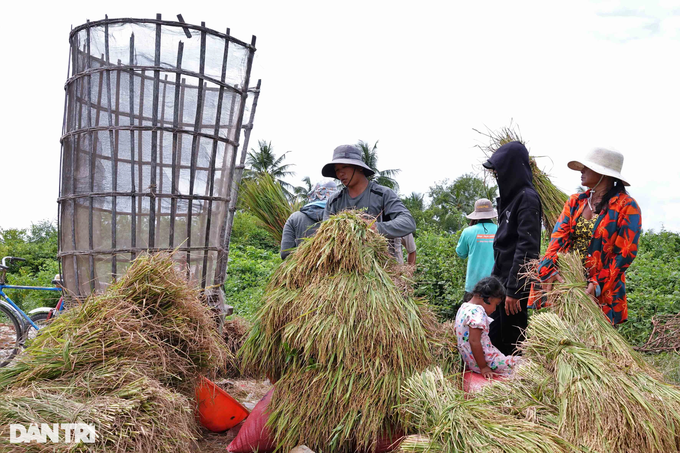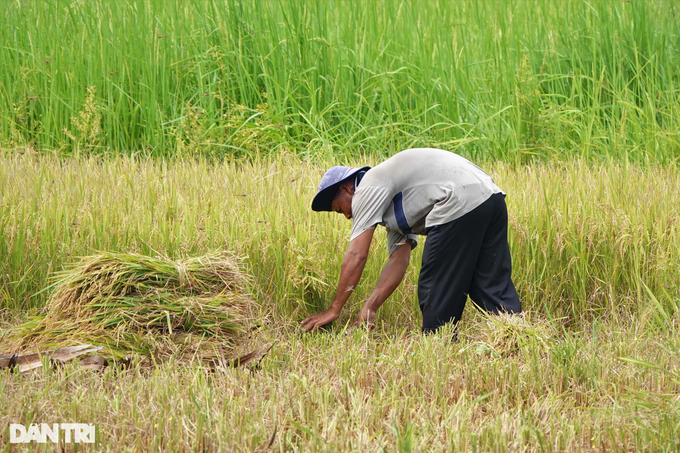After the rice is harvested, people use force to bang on the 2.5m high pots to throw the rice out.
Although mechanization has spread throughout the fields in the country, people in the border areas of Xa Xia hamlet (My Duc ward, Ha Tien city, Kien Giang) still harvest rice in the traditional way.
This is a popular form of rice harvest for people growing wet rice since ancient times with a very simple process, farmers cut the rice by hand and then thresh the seeds with the rice pot. Many people think that this form of rice harvesting is “extinct”, so the images recorded in Xa Xa are said to be rare.
Here are some pictures of the crude rice harvest of people at the Ha Tien – Cambodia border recorded by the reporter:
The scene of bustling rice harvest and threshing in a rice field in Xa Xa hamlet. Each person holding a bunch of rice in his hand moves to the pot to thresh the rice (Photo: Bao Ky).
According to farmers, small rice fields of a few workers (1,000m2) of land are difficult to rent because of the high cost. Instead, rice field owners will find households with livestock to harvest rice by hand, the remuneration each person receives is straw (Photo: Bao Ky).
The cut rice is tied into bundles. People will carry the goods from the field to the gathering yard (Photo: Bao Ky).
The threshing hopper about 2.5m high is made of a tear rod (a container made of rattan and bamboo). The mouth needs to be torn and closed with long bamboo walls wrapped with nets to form a circle, but there is a space left for people to thresh rice (Photo: Bao Ky).
To have a fulcrum for the grain to fall out of the rice stalk, you must have a ladder inside. The ladder is made from 2 pieces of old bamboo and has a curvature to make a vertical bar on the frame, and the horizontal bars are made of old, hard sturgeon (Photo: Bao Ky).
Mr. Vu Van Xoa (47 years old, living in Xa Xia hamlet) said that field owners often do not sell straw, they give it back to households to raise cattle. Therefore, taking advantage of the harvest, the livestock farmers will come to cut the rice, thresh the rice for the field owner and then bring back the straw. “After 2 hours of cutting and threshing, I can cut more than 20 bundles of straw, which is enough for my 2 cows to eat for 2 days,” said Mr. Xoa (Photo: Bao Ky).
Harvesting rice in this way helps both the farmer and the farmer who raises buffaloes and cows. Owners do not need to spend money to rent harvesting machines, and farmers have food for their animals, and do not have to work hard to release cattle to the fields to graze (Photo: Bao Ky).
After threshing, the rice will be put into each bag and delivered to the field owner (Photo: Bao Ky).
Although straw is free, there has never been a situation of competition. Whoever cuts and smashes as much, gets as much. After completing the “trophy” work, they were transported by motorbikes and bicycles to home (Photo: Bao Ky).








